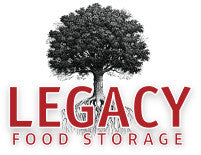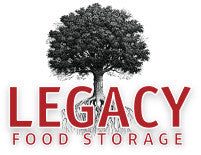
Adapting Emergency Plans: When Life or Location Changes
It had only been a month since the move. Sarah drummed her fingers on the steering wheel, watching the dark clouds roll in and the temperatures dropping fast on her car dash. After twenty years in Florida, the weather alert for an incoming blizzard felt very surreal. Scrambling to brace for several days of forecasted blizzard conditions, their carefully planned hurricane emergency kit and evacuation plans now seemed inadequate. The warnings of white-out conditions and ice storms along with her daughter's concerns on winter driving made Sarah realize their family's preparedness plan needed a serious update for their new life in Colorado.
While the basics of preparedness remain constant, life changes force us to reconsider and adapt our emergency planning. Whether it is relocation, children growing up, new health concerns, or other life transitions, these gaps in preparedness strategy often aren't top of mind until we face them. Adaptation is key to maintaining effective family preparedness. Relocating to a new environment can greatly affect your plan and may not become evident until you are there.
Here's how to systematically update your family's readiness strategy for any move, new environment or not.
Climate Assessment and Gear Adaptation
· Ensure each family member has climate-appropriate gear in their personal go-bags.
· Medical supplies may need different storage considerations at different altitudes.
· Consider local weather and have appropriate gear for kids' school supplies and activities
· Ensure vehicles have updated emergency kits for any new road conditions.
· Review home emergency kits for any change in climate-appropriate solutions.
· Drivers may need instruction or practice for weather conditions.
Threat Assessment
· Research school and workplace locations relative to local hazards.
· Learn how different threats might affect family members separately.
· Ask about school weather closure protocols and have new backup childcare options.
· Consider threats specific to children's activities and sports.
· Security Measures Do you need upgraded locks, cameras, or neighborhood alerts?
Resource Management
· Identify backup power needs for different threats
· Understand local water/food storage requirements
· Familiarize yourself with new utility systems and shutoffs
· Learn local hunting, fishing, or foraging laws if applicable.
· Be aware of firearms & self-defense laws.
Emergency Services
· Learn local emergency alert systems/frequencies
· Update your list with local emergency contacts police, fire departments, hospitals, and emergency management offices.
· Identify new evacuation routes & shelters
Healthcare
· Establish health care providers, pharmacies, and ensure medical transfers.
· Ensure school emergency contact forms reflect a local support network.
· Research emergency service health locations, hospitals, 24-hour pharmacies, and urgent care.
· Ask about new school emergency protocols and dismissal policies.
Pet Plans
· Update pet microchip and tags with new address and vet information.
· Research local pet-friendly shelters/hotels in case of evacuation.
· Identify new veterinary services, emergency animal hospitals, and boarding options.
Route Planning
· Create route plans from each family member's regular locations.
· Consider routes accessible to all family members' driving abilities.
· Establish multiple family meeting points based on different scenarios.
· Practice new fire evacuation procedures in the new home.
Documentation Updates
· Update insurance coverage for new risks
· Update documents (financial planning, wills) with current address.
· If you own firearms moving across state lines could mean different legal restrictions.
Community Integration
· Connect with other families to create new networks.
· Establish relationships with neighbors for emergency support.
Relocating doesn't mean starting your preparedness planning from scratch. Instead, think of it as upgrading your existing strategy for a new location or environment. Take time to understand local risks, adapt your supplies, and update your plans. While the process may feel overwhelming at first, systematic adaptation ensures your family maintains their preparedness advantage even in unfamiliar territory. Remember, good preparation is always about regularly adjusting as things change.
Tags
- All
- 25 year food
- 25 year shelf life food
- 72 hour kit
- Best food storage types
- Best long-term food storage
- Blizzard preparedness
- Budgeting
- canning
- Certified GMO-free Emergency foods
- Certified GMO-free foods
- Coffee
- Comparison of emergency food methods
- Composting tips
- Dangers of genetically modified foods
- dehydrated food
- Edible Wild Plants
- emergcy preparedness
- Emergency Cooking
- Emergency Food
- Emergency food Christmas gifts
- emergency food storage
- Emergency Food Supply
- Emergency food supply recommendations
- Emergency Planning
- Emergency Preparedness
- Emergency preparedness advice
- emergency preparednesss
- Emergency Supplies
- Emergency supplies checklist
- Emergency Survival
- emergency survival gear
- Emergency survival kit checklist
- Emergency Survival skills
- exercise
- Family emergency preparedness
- Family emergency preparedness plan
- Family Preparedness
- Food Storage
- Food storage 25 year shelf life
- Food storage amounts
- Food storage Christmas
- Food storage containers long term
- Food Storage Secrets
- Food storage serving size
- Food storage types compared
- freeze dried food
- Freeze dried food storage
- freeze dried meats
- Freeze-dried emergency food storage
- Fruit Trees
- Gardening
- Getting Started
- Gluten-free food Storage
- Gourmet emergency food
- Healthy food storage
- How much emergency food to store
- Improved emergency preparedness
- Jared Markin
- Jared Matkin
- Legacy Premium
- Lessons learned from Hurricane Sandy
- Lessons learned from natural disasters
- long-term food storage
- Long-term Food Storage Guidelines
- Long-term Food Storage tips
- Long-term water storage
- Mental Emergency Preparedness
- Mental toughness
- Money-saving tips
- Natural disaster planning
- Natural Disasters
- Perfect Christmas gifts
- Pet Emergency preparedness checklist
- Pet Emergency preparedness kit
- Pet Emergency Survival tips
- Pets and Emergency Preparedness
- Plant Foraging
- portable solar panels
- portable solar power
- portable water filters
- protein drinks
- Risk of genetic modification
- Seed saving and storage
- Seed saving guide
- Self-reliance
- Self-reliant practices
- Shelf Life
- Solar Cooking
- Solar Ovens
- Special Dietary needs
- Stranded in a car in a blizzard
- Survival food
- Survival Gear
- survival kit
- Survival kits
- Survival Ovens
- Survival Skills
- survivalist gear
- suvival kit
- Tree Pruning tips
- Tree Trimming basics
- unique ideas
- water bottle with filter
- water filter
- water filter straw
- water filters
- Water Filtration
- water pitcher with filter
- water pitchers with filters
- Water purification
- Wild Food Foraging
- Winter composting
- Winter driving
- Winter preparedness tips
- Winter storm preparedness tips
- Winter Survival







